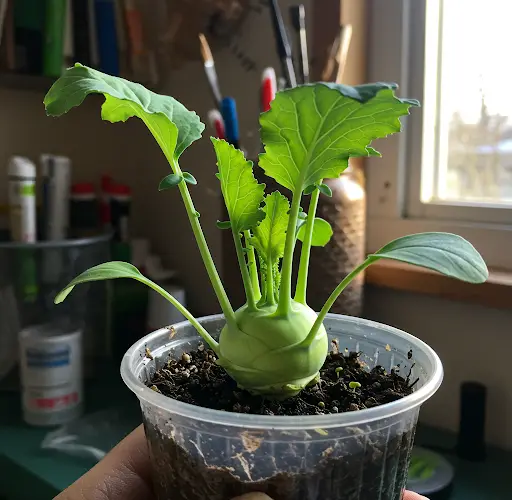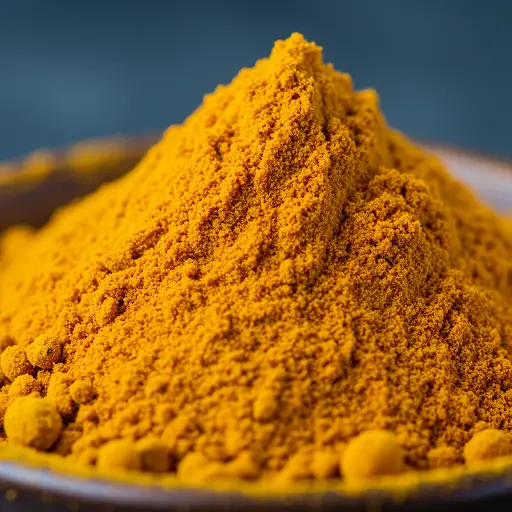Growing Kohlrabi in a Tiny Plastic Pot: Surprisingly High Yields in Small Spaces
Kohlrabi is one of those underrated vegetables that not only tastes great but is also incredibly easy to grow—even in the smallest of spaces. If you’ve ever thought you needed a large garden to grow this crunchy and nutritious crop, think again. With just a small plastic pot and a sunny spot, you can grow kohlrabi successfully at home and enjoy an impressive harvest.
This article will walk you through how to grow kohlrabi in a tiny plastic pot, the kind many people throw away or use for storing small items. Whether you live in an apartment or simply don’t have much gardening space, this method makes it easy to grow your own fresh, flavorful kohlrabi.
What is Kohlrabi?
Kohlrabi (Brassica oleracea var. gongylodes) is a cool-season vegetable, part of the cabbage family. It forms a round, bulb-like stem just above the soil surface and has tender leaves that resemble kale or collard greens.
The taste is similar to a mild turnip or broccoli stem—crisp, juicy, and slightly sweet when fresh. It can be eaten raw in salads, steamed, stir-fried, or added to soups and stews.
Why Grow Kohlrabi in Small Containers?
Most people assume that vegetables like kohlrabi need a lot of space to grow, but this is a myth. Even in a small container, kohlrabi can thrive and yield surprisingly well if given the right conditions.
Benefits of growing kohlrabi in a tiny plastic pot include:
-
Space efficiency – Ideal for balconies, windowsills, and terraces
-
Recycling-friendly – Repurpose old containers that would otherwise be discarded
-
Portability – Move your plant easily to capture the best sunlight
-
Low maintenance – Requires minimal watering and care
-
Quick growth cycle – Ready to harvest in as little as 45–60 days
What You’ll Need
-
1 small plastic pot (6–8 inches deep and wide)
-
Good-quality potting soil (well-draining and rich in organic matter)
-
Kohlrabi seeds (any variety, such as Purple Vienna or White Vienna)
-
Compost or balanced organic fertilizer
-
Watering can or spray bottle
-
Sunny location (4–6 hours of sunlight daily)
How to Grow Kohlrabi in a Tiny Pot
Step 1: Prepare the Pot
Choose a small but sturdy plastic pot with proper drainage holes. If there are no holes at the bottom, make a few using a drill or hot metal skewer. This prevents water from accumulating and causing root rot.
You can even use old food containers or plastic buckets—just be sure they’re clean and safe for planting.
Step 2: Fill with Soil
Use a mix of quality potting soil and compost. Fill the pot almost to the top, leaving about an inch of space. You can also mix in slow-release organic fertilizer at this stage to provide nutrients throughout the growing period.
Kohlrabi prefers well-aerated, fertile soil that stays moist but doesn’t become soggy.
Step 3: Sow the Seeds
Make small holes about 1/4 inch deep in the soil and place 2–3 seeds in each pot. Cover them lightly with soil and gently water. Keep the pot in a sunny location.
Seeds typically germinate within 5–10 days. Once the seedlings reach about 2 inches tall, thin them out to leave only the strongest one. This gives the remaining plant enough space to form a proper bulb.
Step 4: Provide Sunlight and Water
Kohlrabi needs at least 4–6 hours of sunlight daily. If you’re growing indoors, place the pot near a south-facing window or use grow lights if natural light is limited.
Water consistently to keep the soil moist but not waterlogged. Check regularly, especially in warm weather, as small pots can dry out quickly.
Caring for Your Kohlrabi
-
Fertilize lightly every two weeks with a diluted organic liquid fertilizer.
-
Watch for pests like aphids or cabbage worms—treat with neem oil or soapy water if needed.
-
Mulch the top of the soil with dried leaves or compost to retain moisture and suppress weeds.
-
Rotate the pot if only one side is getting sun, so the plant grows evenly.
When and How to Harvest
Kohlrabi is ready to harvest when the bulb reaches the size of a tennis ball—typically 45 to 60 days after sowing, depending on the variety.
Use a sharp knife or garden scissors to cut the bulb at the base, just above the soil line. Avoid letting the bulb grow too large, as it may become woody and tough.
You can also harvest the leaves and use them like kale or collards—they’re delicious when sautéed or added to soups.
Final Thoughts
It’s truly surprising how much one small plastic pot can produce. With very little space and effort, you can grow crisp, flavorful kohlrabi right at home. This method is perfect for apartment dwellers, beginner gardeners, or anyone looking to maximize their harvest in a tiny space.
Kohlrabi not only adds variety to your meals but also proves that even limited space can yield fresh, homegrown food. Give it a try—you might be amazed at how rewarding container gardening can be!



